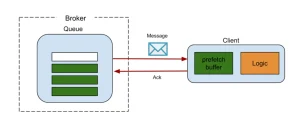Producing effective content is one of the most effective ways to engage your target audience and achieve desired outcomes. Here are a few tips for success.
Prior to anything else, ensure your target audience is clearly defined. Understanding your customers’ pain points and needs will guide all content production efforts.
1. Identify your target audience
Identification of your target audience is the most essential step when creating an effective content strategy. Knowing who they are allows you to craft material that resonates with them and drives traffic to your website.
To gain a clear understanding of your audience, you can solicit customer feedback and conduct market research. Doing so will give you insights into their difficulties, desires, and values.
Analytical data can also help you identify who your target audience is and which platforms they prefer. This knowledge will enable you to craft a content strategy tailored towards reaching your business objectives.
2. Develop a content strategy
A successful content strategy should be driven by the goals of your business and target audience. It also lays out the type of material needed to meet those goals as well as how it will be distributed.
Crafting a content strategy takes considerable effort and careful consideration, but the rewards can be immense for your business. A well-thought out strategy will increase brand visibility, enhance engagement with your target audience and enable you to meet sales targets.
3. Create a content calendar
A content calendar is essential for marketers as they strategize their upcoming campaigns across various platforms, such as their website, blog, social media accounts and more. It serves as their go-to for organizing and producing high-quality material that attracts attention and keeps readers engaged.
Your content calendar should outline the theme, topics, keywords and types of content your marketing team plans to create. Additionally, it should indicate when each piece will be published or repurposed as well as when it will be distributed.
4. Develop a content distribution strategy
Content distribution is the act of sharing and promoting blog posts, videos, or other digital assets. This is an integral component of your overall content strategy as it can help you reach more people and boost brand recognition.
Before creating a content distribution strategy, identify which channels best meet your objectives and target audience. You can do this through various methods such as user surveys or social media analytics tools.
5. Create a content audit
Content audits provide you with a data-driven view of your website’s content, offering suggestions on how to enhance it. They also assist in avoiding duplicate or irrelevant material.
Once you have a list of web pages to audit, begin organizing them into a spreadsheet. Label each page with an informative category so that your analysis can provide useful insight.
Once you’ve classified your content, set thresholds for the metrics you wish to monitor. This will help determine whether to keep, update, delete or rewrite the material.
6. Create a content audit checklist
Content audits provide insight into content strengths and weaknesses, as well as uncover new content opportunities. They also enhance search engine optimization (SEO) and conversion rate optimization (CRO).
Begin by creating a spreadsheet with tabs for each type of web page you plan on auditing, such as blog posts, service or product pages, etc.
7. Create a content audit report
A content audit is a systematic method that assists in recognizing content strengths and weaknesses, as well as uncovering new opportunities to strengthen your current strategy.
When conducting a content audit, it is important to take into account your business objectives and decide the most useful information to collect. Doing this will guarantee that your content is tailored towards achieving those results and meets all necessary criteria.
Instead of using a template, create a personalized content audit report tailored to your company objectives. Doing so will make the process more efficient and streamlined.







More Stories
Building Marketing Strategies for the Spatial Web and Immersive Experiences
Leveraging Interactive Content and Gamification for Lead Generation: The Game Has Changed
Beyond Borders, Not Culture: The Art of Marketing to Global Niche Audiences